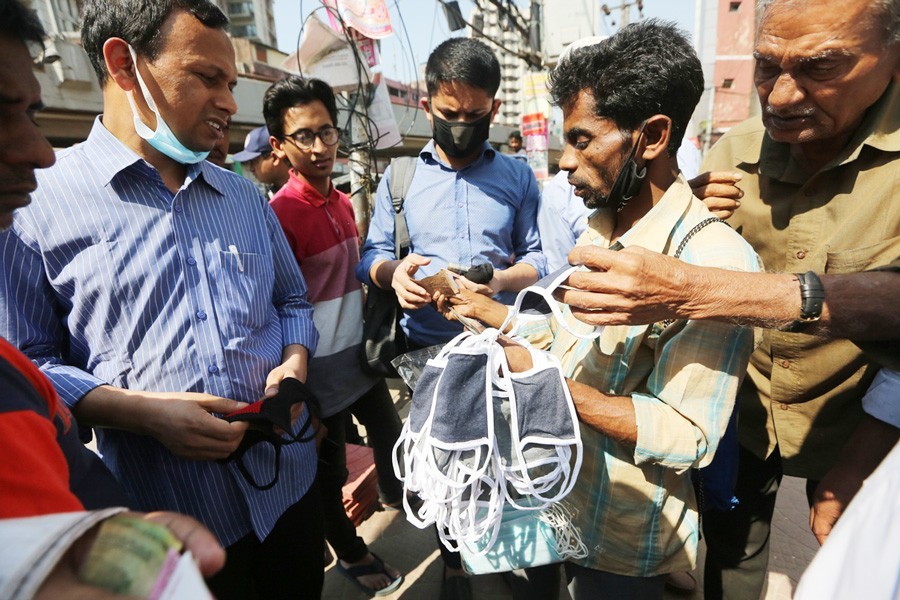The findings of the IEDCR-ICDDR, B epidemiological survey have spoken volume about the state of Covid-19 infection in Bangladesh. Those might also prove helpful for the government in designing its next course of action.
The numbers that have emerged from the survey, carried out between April 18 and July 05 covering 12,699 people in 25 wards of two Dhaka city corporations, do also point to the inadequacy of the data published regularly by the Directorate General of Health Services (DGHS) on Covid.
Around 45 per cent of the individuals covered by the survey were found to have Covid-19 antibody. The presence of the antibody is much higher in the case of slum dwellers---74 per cent.
These figures are encouraging in the sense that the people are in the process of developing the so-called herd immunity, which, according to the World Health Organisation (WHO) chief Tedros Ghebreyesus, is 'immoral and problematic'.
Exposing the population to any pathogen is one way of developing herd immunity. But it has a cost, in terms of physical sufferings and death. The best way to get it is vaccination.
If the people are in the process of getting herd immunity, it must have been through the exposure to the novel coronavirus since the vaccine is not yet available.
But what has been the cost of acquiring it? None has any definite answer to the question.
Sweden is one country that had in the initial months of the outbreak of the disease, faced strong criticism for not imposing any lockdown and leaving the adherence to safety measures to its citizens. The country did pay a heavy price--- 5,800 people died in a country of only 10 million. But, the Swedish government feels its approach has paid off. When most European countries are now experiencing a surge in infections following the withdrawal of lockdown and other restrictive measures, Sweden is having fewer cases.
Nearly 10 per cent of 12,699 individuals, or one in 10, tested through RT-PCR machines under the IEDCR- ICCDR,B survey were found Covid positive.
Taking that result into account, the people infected in Dhaka alone stands at around 2.0 million (assuming the population of Dhaka at 20 million). The DGHS estimate put the total number of Covid infected people across the country at 3,80,000 until Tuesday last.
All the numbers do make it clear that an unspecified number of people in Dhaka and elsewhere in the country were exposed to the virus and there had been no tests to detect it. Some of them suffered and died. Many others recovered on their own.
The survey has also found a notable development. Nearly 82 per cent of the Covid-infected people were asymptomatic. This could be one of the main reasons for people not going for tests.
The findings of the survey have proved one particular assumption---poor and low-income people living in slums are immune to Covid---right, to some extent. The presence of antibody in 74 per cent slum dwellers does corroborate that fact. The reasons behind it need to be investigated by the health professionals and researchers. Dhaka slums are not unique in this case. A similar situation has been found in slums of the Indian cities of Mumbai and New Delhi.
Some people, however, have questioned the representative character of the survey and also the wisdom behind making the findings of the survey public. They tend to argue that such a small-scale survey cannot be representative. Besides, they feel, the findings would only make the health authorities and the vast majority of the population far more complacent.
The level of adherence to health safety guidelines that make wearing of facemasks mandatory is now found to be at its lowest level. The issue of herd immunity is likely to make them even bolder. That could make the arrival of the so-called second wave closer than many think.


